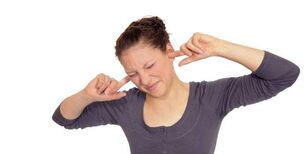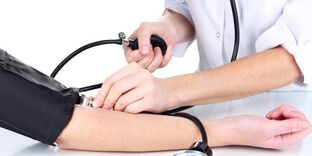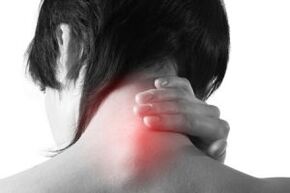The diagnosis of osteochondrosis, in my opinion, is not as depressing as circulatory encephalopathy and vegetative-vascular dystonia. Yes, under our "osteochondrosis" and abroad means a completely different pathology. Abroad - this is a severe skeletal lesion, especially in children. With us, it is enough to complain of pain in the neck, do an X-ray or MRI (where degenerative changes are definitely found) - and this is the diagnosis of osteochondrosis.
The main cause of back pain
In most cases, patients are diagnosed with osteochondrosis with back pain. But in fact, the reason is different:
- Nonspecific back pain
Caused by muscles, ligaments, tendons. No MRI required. This is the most common cause of back pain and the best option, as doctors usually prescribe very appropriate therapies - non-steroidal anti-inflammatory drugs, drugs for muscle relaxation, exercise therapy. It should be noted that for chronic pain lasting more than 3 months, a completely different medication is required. - Causes of back pain are relatively rare. Are you surprised? If a hernia is found on an MRI, and the back is sore, isn't the hernia the cause of the pain? In most cases, no. With a hernia, in addition to pain, there are definitely other symptoms: certain muscle weakness, decreased tendon reflexes, impaired sensitivity in the root nerve zone. There are no such symptoms - you can forget the hernia as the cause of the pain.
Serious causes other than pain and other symptoms are excluded based on MRI.
Worse when the diagnosis of osteochondrosis is made with completely different complaints: increased stress, dizziness, weakness, restlessness, headache. What should we exclude in this case?
- Tension headaches and migraines.
Not related to your neck. Healing the neck means following the wrong path, bringing your pain chronic. Tension headaches may be accompanied by muscle tension, but still tension headaches, not osteochondrosis. - Dizziness
Not because of acute blues. The real causes of dizziness: benign paroxysmal position dizziness, vestibular data injury, vestibular migraine, Meniere disease, vestibular paroxysm, pathology of the cerebellum and trunk, psychogenic dizziness, iron and vitamin B 12 deficiency, heart disease, lung disease and more. - Arterial hypertension.
Sometimes I think that if a patient's blood pressure rises, then his neck and, of course, his neck should be examined. Do you find arterial hypoplasia, tortoise, degenerative changes in the cervical spine? Let's blame them for the increased pressure. This does not make sense. In fact, there is no link between increased pressure and neck. - Depression Depression Anxiety.
Do you experience anxiety, dizziness, weakness and fatigue, sleep disturbances? Let Benim neck again. And weak patients, instead of consulting a psychiatrist with antidepressants and sedatives, receive physiotherapy, massage and some sort of homeopathy. - Iron deficiency, thyroid dysfunction.
Always remember when you complain of fatigue, weakness, decreased focus, dizziness, headache.
Changes occur in our body over the years. Baby's skin is soft and elastic. At the age of 30, no matter how we use cosmetic procedures, she is no longer like that. Imagine a sailor who has spent the rest of his life sailing: his skin is rough and wrinkled. The same thing happens with our spine. In most cases, protrusion and hernia are natural age-related changes. If there are many provoking factors in your life, for example, carrying a heavy load, then the chances of getting a large hernia will increase.
Numerous studies have shown that disc protrusion occurs in healthy people: at the age of 20 - up to 40% of those examined (remember, this is a patient without back pain), at age 70 - up to 90%. In addition, the severity of the changes on MRI is not associated with the degree of pain syndrome: with a large hernia, there may be no pain at all, and with a small protrusion, the patient may experience severe pain (because the cause is not on the protrusion, but on the other).
Has a hernia never hurt?
Of course it does! In about 1-4% of all cases of back pain. How do you know this? Hernia causes not only pain, but also other disorders: sensitivity disorders, reflex changes, and sometimes a decrease in muscle strength. All of this is determined by a competent physician during a neurological examination.
If muscle strength is sufficient, the reflex when tapping with a hammer is symmetrical, does not weaken, there is no sensory disturbance, then it is very unlikely that back pain is caused by a hernia.
Also, squeezing the roots of the spine at a certain level (if you read the MRI results, you will see that the protrusion and hernia are explained at the level, for example, C3-C5 or L5-S1), the hernia causes not only a decrease in sensitivity whereonly, but certain segments, and strictly defined reflex changes. Neurologists associate lesion levels with MRI data.
Classification of symptoms in cervical osteochondrosis
The development of the disease sometimes occurs before the age of 30-35 years, therefore, the symptoms of the disease can appear even in adolescence. The signs of cervical osteochondrosis are discussed in detail below, the disease has become a real problem in the modern world. Unemployment, prolonged stay in front of a computer has a negative impact on a person's state of health, well-being. All symptoms of cervical osteochondrosis are associated with damage to several systems:
- In further cases, there are signs of compression, the integrity of the spinal cord located in the affected spinal canal.
- Pathological nerve processes can affect the peripheral system. The spinal cord root, located near the center of bone and cartilage tissue deformation, is negatively affected.
- In some cases, vertebral artery testing occurs. These blood vessels provide nutrients, oxygen, to the brain cells. Violations of this process cause deterioration of human well-being.

It is well known that one of the first signs of the development of this disease is pain in the cervical spine. At first, it passes quickly, periodically, but then becomes chronic. The main places of localization of pain are:
- occipital muscles (intensified by twisting the neck, tilting the head);
- shoulder area;
- neck.
It can be painful in different ways, depending on the location of the lesion, the discomfort can be sharp, shooting, periodically reduced, painful and persistent. Over time, head movements become more difficult due to tension in the neck muscles. If the arteries are pinched, cervical migraines are sometimes observed (with poor blood supply, lack of oxygen, headaches appear).
Nausea
In some cases, the blood vessels of the circulatory system are compressed, providing a supply of oxygen and nutrients to the human brain and inner ear. Because of this, nausea occurs with osteochondrosis. This symptomatology is accompanied, as a rule, by loss of appetite, which leads to weight loss, lack of necessary nutrients. At a later stage, the disease can cause vomiting when turning the head, walking or bending over. This is due to the lack of blood supply to the middle ear, where the balance center is located.
Neurological symptoms of cervical osteochondrosis
Some manifestations of this disease may not be immediately associated with characteristic signs. You need to know what symptoms of cervical osteochondrosis can not be ignored, for example, shortness of breath. If this part is damaged, phrenic nerve irritation syndrome can develop. Patients have difficulty breathing, there is a lack of oxygen, which causes shortness of breath and even shortness of breath.
This pathological manifestation is often accompanied by snoring, it increases if you take an uncomfortable position during sleep. This leads to the fact that one does not rest at night, wakes up with feelings of general lethargy, weakness, feeling tired and overwhelmed. This condition, if left untreated, can lead to memory impairment, decreased concentration and irreversible changes in brain tissue.
Vestibular sign
Another direction, how osteochondrosis of the cervical spine manifests itself - vestibular signs. The supply of the brain with all the necessary nutrients occurs through the vertebral arteries. If cervical chondrosis develops, in which the work of the inner ear is disrupted, the patient experiences tinnitus and ringing. In some cases, hearing loss or loss is added to these symptoms.

Throat in the throat
In some cases, the disease appears in only one symptom - the pharynx. There is a feeling that a lump has formed in the throat with osteochondrosis of the cervical spine, there is sweating, itching, dryness, difficulty swallowing. This manifestation is associated with neurovascular trunk conduction disorders originating from the spinal cord. A lump in the throat is not a typical symptom of chondrosis; it may indicate a tumor or inflammatory process. When these symptoms appear, you must see a doctor.
Visual signs of cervical osteochondrosis
Symptoms of cervical spine chondrosis can vary, but the most common is visual impairment. The supply of visual analysts occurs through the carotid arteries and vertebrae. If a decrease in blood circulation occurs due to the last pressure, a decrease in vision will begin, which does not improve when wearing glasses. Cervical osteochondrosis - symptoms:
- low blood pressure;
- floating point, flickering;
- arterial atherosclerosis of the brain;
- violation of subject focus;
- shroud, fog in front of eyes.
Characteristic signs that vision loss occurs due to pinching of blood vessels by the vertebrae, impaired blood circulation, will be a lack of improvement when wearing glasses, doing specific exercises. Only timely treatment of the disease (before irreversible tissue damage) will help change the situation.
Arterial signs

The spine plays an important role in the human body, so any disease affects many systems. There are certain arterial signs of cervical osteochondrosis that indicate this disease. This includes sudden loss of consciousness. These are the most unpleasant dangerous symptoms that exist in this disease. This is due to disrupted blood circulation, when blood stops flowing temporarily through the cerebral arteries.
Severe arterial spasm occurs due to a defective bone process response to nerve end irritation. If your friend has osteochondrosis of the cervical spine and has lost consciousness, he must lie down, his legs raised to a small height to increase blood flow from the limbs and increase flow to the brain. After that, people tend to recover quickly.
Blood pressure instability is another symptom of the disease. Doctors can diagnose spasmodic indications if blood supply is disrupted. This is not a typical symptom of chondrosis, but fits the general picture of the disease. Blood pressure can drop or rise sharply. One feels the deterioration of his condition, so he needs to ensure peace.
Dizziness
It has previously been explained that loss of consciousness sometimes occurs with this disease. This is the case for cases where blood flow to the brain is very difficult. More often, patients feel dizzy with cervical osteochondrosis. These are common symptoms that accompany all patients with the disease. This phenomenon has spontaneous manifestations. This condition is caused by a reduction in the amount of oxygen supplied to the inner ear. It is located in the human brain and is responsible for a sense of balance. Dizziness occurs when:
- turning head, neck;
- if you suddenly wake up from sleep.

Temperature for osteochondrosis
In some cases, pathological processes spread between the structures of the cervical segment of the spinal cord. This occurs with disc protrusion, duct stenosis. Temperature in osteochondrosis is the body's response to this pathology. The same reaction occurs with vertebral artery syndrome. This is a common occurrence in osteochondrosis in the final stages of the development of the disease. Therefore, an increase in temperature refers to nonspecific disease symptoms.
These symptoms do not necessarily exist, the body's thermoregulation may be normal. If you feel constant pain in the back of the head, shoulders, neck, and when you turn or tilt the head, deterioration occurs, you should see a specialist and undergo an examination. Lack of treatment will definitely make the situation worse, the level of comfort in life will decrease.
Learn more about what to do when diagnosed with cervical spine osteochondrosis.
Symptoms of cervical osteochondrosis
Cervical osteochondrosis is a lesion on the vertebral disc of the cervical spine, as a result of which they undergo degenerative-dystrophic changes. The main cause of its development is a violation of normal metabolic processes, which causes abnormalities of the structure of the vertebral body and cartilaginous discs. In the case of localization in the neck, pathological symptoms are largely determined by compression of large vessels. The method of treatment chosen depends on the degree, specificity of the course, severity, the main symptoms.
Characteristics of this disease
The cervical shape is the most dangerous type of osteochondrosis: it leads to a deterioration of cerebral circulation, as the vertebral arteries pass through this area - one of the largest vessels supplying the brain with essential nutrients and oxygen.
Spinal displacement, abnormal changes and growth of bone and fibrous tissue interfere with the normal functioning of vessels.
The specificity of the symptoms of osteochondrosis in this section is determined, among other things, by one of the structural features of the cervical vertebrae, consisting of their closer adherence to each other. As a result, every change in a segment leads to the failure of the entire department.
Clinic depends on the level
In the process of its development, cervical osteochondrosis goes through four stages. How does it manifest itself in each?
- Level 1. It is characterized by the appearance of initial disturbances in the stability of the intervertebral disc. Symptoms are mild or nonexistent. Very noticeable pain sensations and local muscle tension are possible.
- Level 2. Disc protrusion begins, gap between vertebrae is reduced, fibrous annulus collapses. In many cases, as a result of compression of the nerve endings, pain appears, especially in the form of points. They get stronger when turning, tilting the neck. Lowering the tone, weaknesses often appear.
- Level 3. The process of final destruction of the fibrous ring leads to the formation of a hernia. This stage is characterized by significant spinal deformities. Increased pain and fatigue occur against the background of sensory disturbances and limited movement in the affected area.
- Level 4 is the hardest. Intense pain syndrome appears with any attempt to move, which requires the mobility limitations of this department. Sometimes, the pain subsides, but this does not indicate an improvement in the condition, but only indicates an increase in the size of the bone growth, which significantly restricts movement. They often cause patient disability.
Symptoms of cervical osteochondrosis
When in the cervical spine, the symptoms of osteochondrosis occur:
Pain is the main symptom
- pain in the cervix, occipital, shoulders, arms;
- restriction of movement, cracks at various turns, neck tilt;
- weakness in the hand;
- draws pain in the left side of the chest, radiating to the corresponding arm;
- burns in the interscapular zone;
- recurrent headaches;
- weakness;
- dizziness (with severe cervical osteochondrosis, it can lose consciousness);
- disordered movement coordination, which is mainly reflected in walking style;
- hearing loss, ringing in the ears;
- decreased vision;
- sore throat;
- poor dental health;
- weakening or hoarse voice;
- snoring is the result of tension in the neck muscles.
In the cervicalothoracic type, the symptoms are very similar to cervical osteochondrosis. Ia:
- asthenic syndrome;
- dizziness and headache;
- periodic pressure fluctuations;
- twinkling in front of eyes;
- pain in shoulder and arm belts;
- muscle weakness;
- numbness, tingling, finger freshness;
- pain in chest, heart;
- nausea;
- numbness of the tongue, face;
- dental problems;
- sensation of current flowing along the arm while trying to bend the neck.
Syndrome
Symptoms of cervical osteochondrosis are not considered normal. Which one most clearly depends on the specific target. A large number of manifestations can be mistakenly associated with other pathological conditions. Therefore, wrong treatment often occurs. The symptom complex is divided into the following groups:
- radicular;
- vertebral artery syndrome;
- irritation-reflex syndrome.
Radicular Syndrome
Its second name is cervical sciatica. The syndrome develops as a result of pinching the nerve endings in the neck. The pain is brought down from the neck, given to the shoulder blades, down along the shoulders along the outside of the forearm to the fingers. In this case, it often appears:
- creepy feeling;
- tingling in the hands, forearms, fingers;
- pasty.
Manifestations also vary depending on the lesion area. If the tip of the central nerve is affected, the excitement extends to the thumb, middle, index finger. When the brachial nerve end is pinched, the little finger and ring finger are affected.
Irritation reflex syndrome
Burning sharp pain in the cervical-occipital area, appearing during movement after static conditions: after sleep, during sneezing, sharp head turn, is a sign. Often the pain radiates to the shoulders and chest.
Vertebral Artery Syndrome
Symptoms of cervical osteochondrosis with it become:
- throbbing or burning headaches (paroxysmal or persistent), extending to the temporal, dark, occipital, and eyebrow cavities;
- increased discomfort with certain movements or after a long stay in an uncomfortable position;
- general weakness;
- nausea;
- loss of consciousness;
- hearing loss;
- vestibular device disorders;
- eye pain;
- blurred vision.
Heart Syndrome
With the appearance of complex symptoms of osteochondrosis of the neck, a picture very similar to angina pectoris develops, which often leads to incorrect treatment. Muscle contractions and cramps in the heart area are most likely a reflex response to nerve endings in the lower cervical region. Cardiac syndrome is caused by irritation of the phrenic nerve (its fibers lead to the pericardium) or the pectoralis major muscle:
- pain appears suddenly, lasting;
- exacerbated by sharp neck movements, coughing, sneezing;
- tachycardia and extrasystole are possible;
- pain does not stop after taking coronary dilator;
- there are no signs of circulatory disturbances on the ECG.
Deterioration of disease
In the exacerbation stage, the symptoms of cervical osteochondrosis are:
- increased pain and its radiating to the shoulder blades, interscapular zone, arms, shoulders;
- Difficulty moving shoulders, torso, arms, sometimes breathing (inhalation and breathing);
- pain syndrome often resembles a heart attack or intercostal neuralgia;
- when pain appears in the right hypochondrium or iliac region, clinically similar to the manifestations of gastritis or cholecystitis;
- prolonged headache, imbalance, impaired visual and auditory function;
- in the nerve zone, disturbed skin trophism, tingling, numbness, dryness, pallor, burning, visible cold;
- cervical muscle tone increases;
- weakness, lethargy, nervous tension, restlessness, emotional instability appear;
- possible sleep disorders, memory disorders, problems with concentration.
How is the disease diagnosed
The main methods for the diagnosis of cervical osteochondrosis are:
- radiography;
- magnetic resonance imaging;
- computed tomography;
- Ultrasound Doppler;
- duplex scanning.
The last two methods are used to check the condition of the cervical canal.
Signs of cervical osteochondrosis
The cervical spine contains a large number of blood vessels that nourish the brain. Thus, any problem in the neck, including cervical osteochondrosis, can cause a deterioration of blood supply to the brain. Therefore - and the most common signs of cervical osteochondrosis:
- frequent headaches and dizziness,
- occasionally - faint suddenly,
- movement coordination disorders, the appearance of "relaxation" of walking style,
- hearing loss, ringing in the ears,
- visual impairment,
- the appearance of toothache,
- appearance of hoarse voice in voice, change of tone of voice, weakening,
- snoring,
- persistent sore throat.
Other symptoms of cervical osteochondrosis include cold in the fingers, numbness, weakness in the arms, pain in the neck and shoulders, often accompanied by dizziness and nausea.
How to treat this disease
Osteochondrosis of the cervical spine, symptoms and treatmentdepends on the patient's condition, the severity of the disease, the nature of the cervical vertebral lesion.
- In the acute period, treatment and medical treatment may be required.
Analgesics, novocaine muscle blockers, muscle relaxants that relieve muscle spasms are commonly used; chondroprotectors for cartilage tissue nutrition; sedative that calms the nervous system, B vitamins that increase neuromuscular flow.
Treatment of osteochondrosis of the cervical spine is always long-term, and must be comprehensive.
- During a period of remission, when there are no acute symptoms, physiotherapy methods (electrophoresis, ultrasound, etc. ) are widely used, physical therapy, massage, and even non-traditional procedures, for example, acupuncture, must be prescribed.
There are many conservative treatments for osteochondrosis that can stop the progression of the disease. However, each patient needs individual treatment, taking into account the stage of the disease, the characteristics of the organism, gender and age.
The goal of cervical osteochondrosis treatment is:

- Relieves pain and swelling at the site of inflammation.
- Relaxation of tense neck muscles.
- Pinched nerve root release.
- Improves blood circulation.
- Activation of metabolism.
- Improves nutrition of intervertebral discs.
Comprehensive targeted treatment can prevent protrusion and intervertebral hernia.
In order not to startosteochondrosis of the cervical spine, symptoms and treatment, and to avoid complications of severe disease, timely treatment should be started.






















